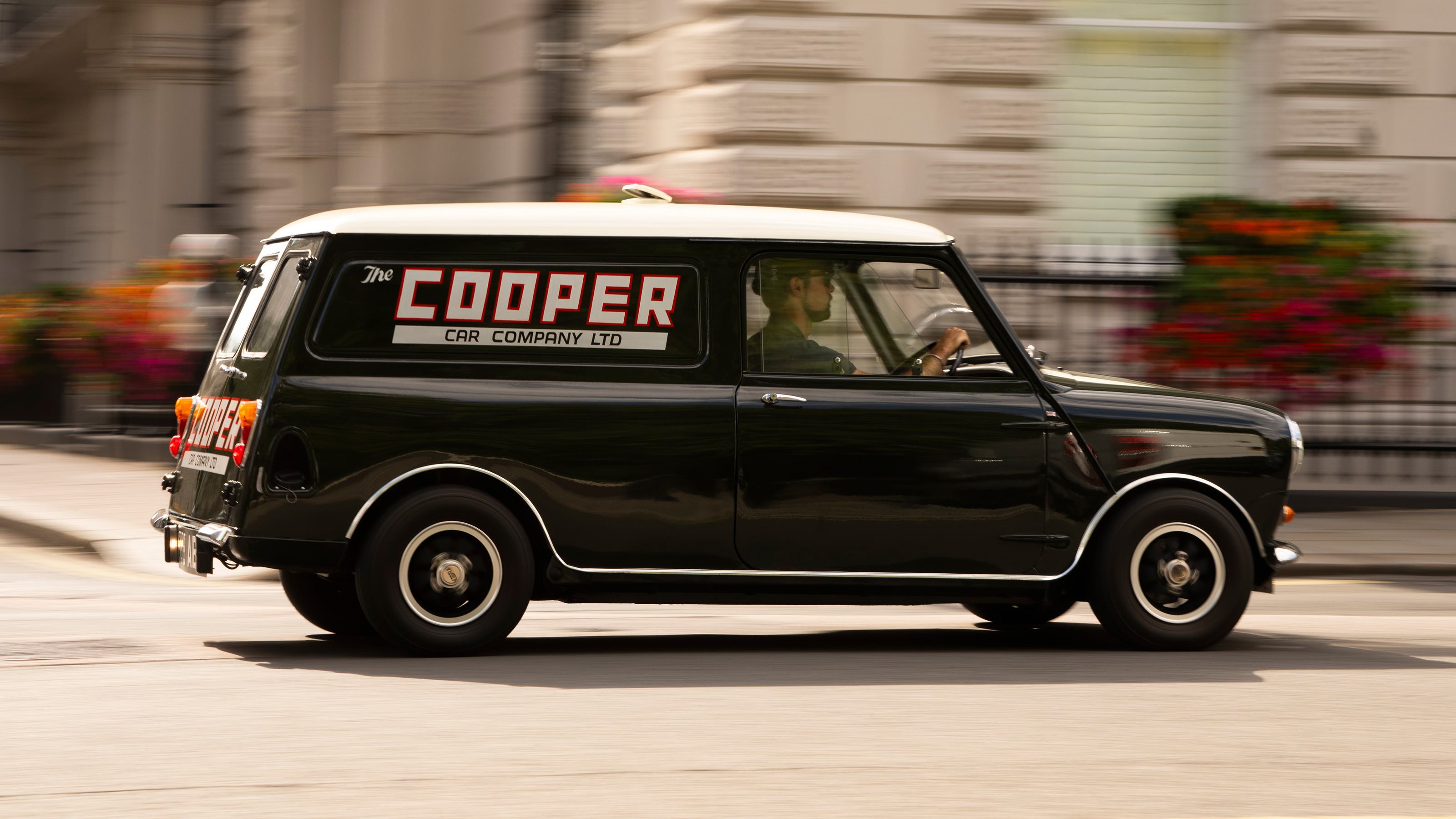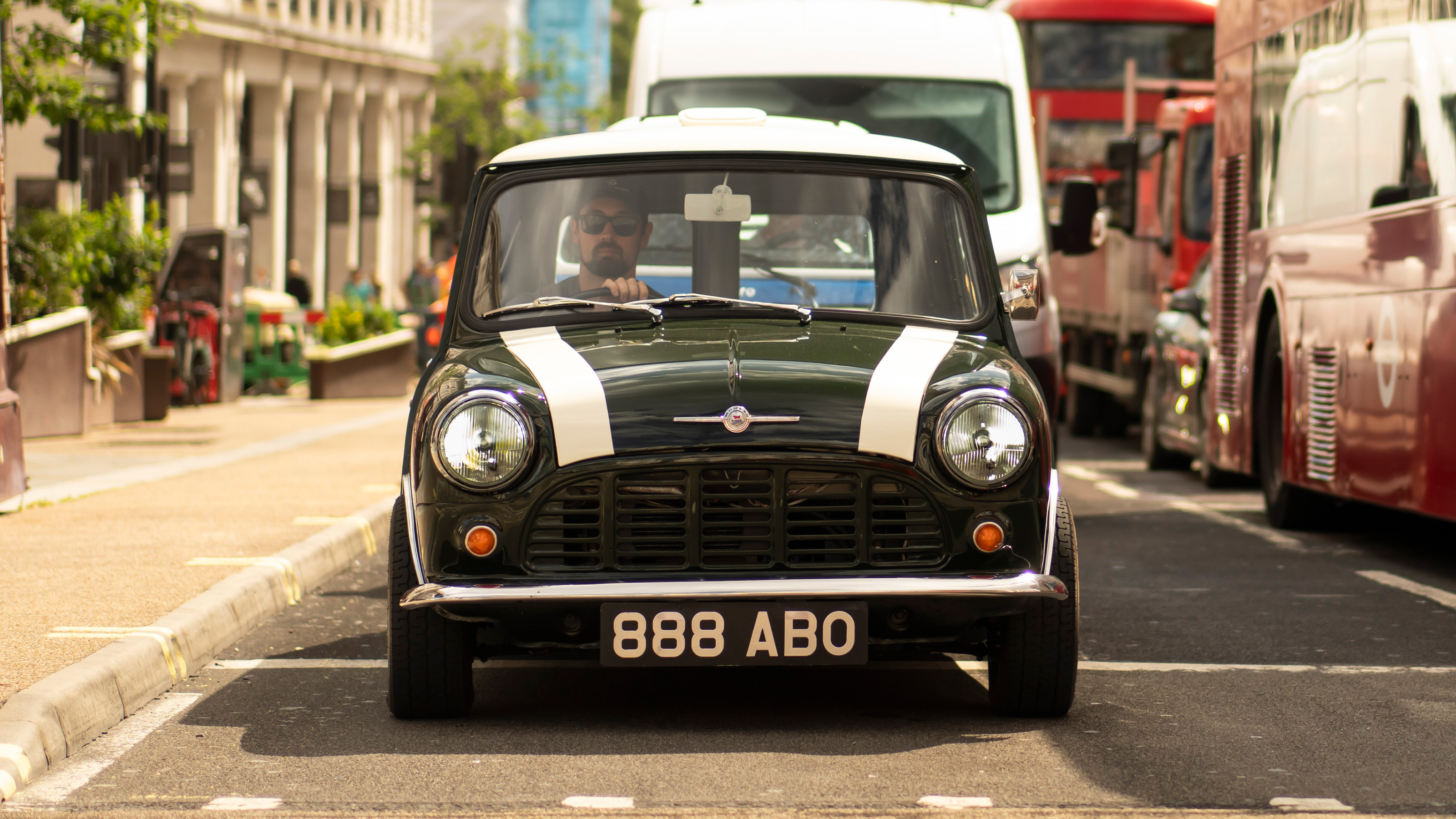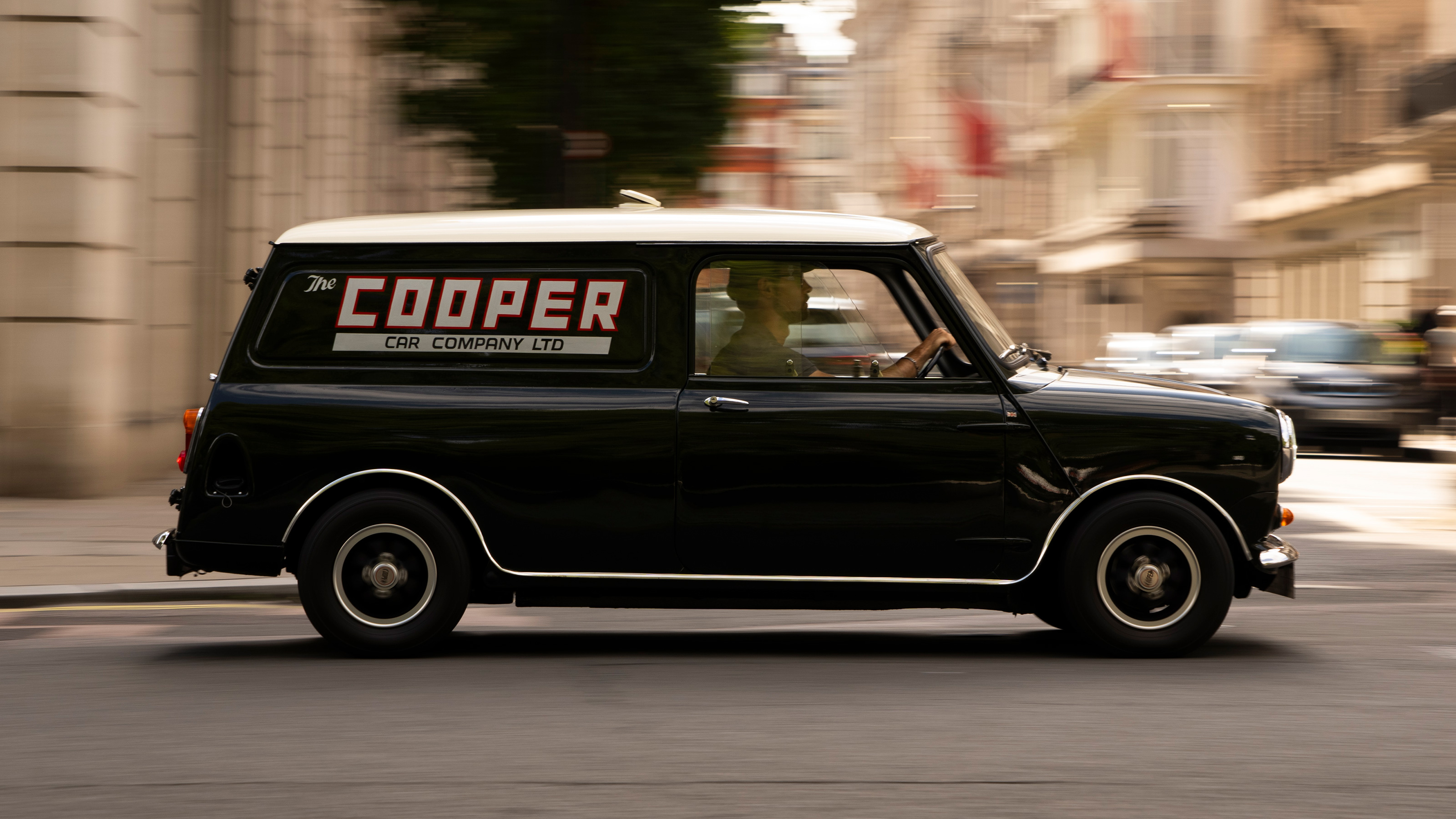
Electrogenic Mini review: is the most iconic city car better as an EV?
£30,000 when new
Late for a classic race meeting, are we?
You’ve a good eye. This is a Mini Cooper van – a rare 1962 ‘flatroof’ example. This particular one liveried up as an exact replica of the original race team spares van of the Cooper Car Company.
And it’s been kindly loaned to us by Mike Cooper. Yes, that Cooper. Son of John himself, father of the mid-engined racing car. The name on all the go-faster Minis. And so’s this one, appropriately. It generates a meaty 135bhp, which is enough to chirrup the front tyres and really gee up your bullion heists. All thanks to an electric powertrain you can bolt in at home between breakfast and elevenses.
What’s going on under the bonnet?
This e-conversion is the work of Oxfordshire-based Electrogenic. They specialise in kits for Land Rovers, there’s the inevitable (controversial) Porsche 911 offering and they’ll even make a DeLorean less awful.
Recently they unveiled an intriguing project to offer e-conversions for original Mazda MX-5s. Sacrilege to some, highly relevant to others – their electric Jag E-Types are doing a roaring trade in the USA.
What’s special about their Mini conversion?
The reason this package interests me most of all is because it’s a self-install job. Welcome to the age of the e-kit car.
Yep, like a GM ‘crate V8’ in the US, this is a powertrain swap you can order online and do yourself. In simple steps: drop the sub-1.0-litre engine and original subframe, swap brakes and suspension onto a new Electrogenic subframe with e-motor attached, and mate it to your donor Mini.
How much?
Saving yourself a few quid on labour might appeal when you learn that the kit price itself is £25k for a 90bhp motor (plus VAT) and this 135bhp version is £30k. Plus VAT, donor car not included. Not cheap.
So, this isn’t a bargain city car, and neither is it necessarily the greenest way to go motoring because as we know, the lion’s share of an EV’s carbon emissions come in the creation of its battery. Here, the body’s manufacture happened six decades ago, but the new powertrain is going to take a while to offset.
Why bother then?
I suppose it’s the peace of mind that these conversions make classics so much more useable for people who don’t like to spend their Sundays elbow deep in an oily pit ‘tinkering with the old girl.’
Whether you like the idea or think it’s desecration, there’s apparently a healthy market for mixing the impossibly cool Carnaby Street aesthetic with the push-and-go ease of operation of an iPhone. Making that conversion easy to DIY is a promising avenue for the future of domestic car modding.
Top Gear
Newsletter
Thank you for subscribing to our newsletter. Look out for your regular round-up of news, reviews and offers in your inbox.
Get all the latest news, reviews and exclusives, direct to your inbox.
Does it actually work?
What I can tell you is that in 2025-spec London, with its traffic calming, pedestrian islands, bus lanes, cycle superhighways, disco rickshaws and one-way mazes, a sixty-year-old Mini remains fabulously fit for purpose.
You’re low, right on the deck in what feels – literally – like a go-kart, nestled in a foursquare wheelbase with legs astride the slender, reclined steering wheel. As soon as you’re out of your parking space the unassisted wheel is easy to thread from side-to-side, and you’re off in search of gaps to exploit.
How is it repackaged?
The motor’s under the stubby bonnet, with the 20kWh battery living in an XXL toolbox amidships. In a ‘car’ version, this would be tucked into the boot. So, you could still squeeze in four mates (or nine clowns)… but none of their luggage.
I like the re-interpretation or classic controls – the choke plunger acts as the drive selector: push in for forwards, pull out for reverse. A toggle switch changes from Cooper through Cooper S to Cooper GP mode, upping the power map from sedate to fizzy.
And the fuel readout at the bottom of the central speedo has been recalibrated to display remaining range. Around 100 miles is claimed – more than a day’s work in a city where the average traffic speed is nine miles an hour.
Featured

Trending this week
- Car Review
Ferrari Amalfi
- Long Term Review
Is the Suzuki Swift still the best small car money can buy?






